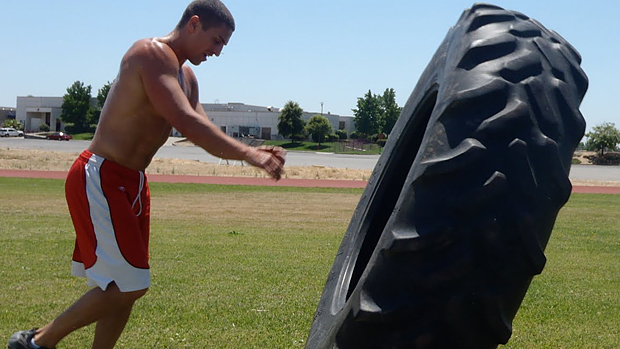Every time you walk into a gym, every guy is bench pressing. While the bench press is great, without balance it can lead to significant overdevelopment of the chest and underdevelopment of the back, which, in turn, can cause nagging injuries or pain.
To reduce the risks of this happening, lifters and athletes need to strike a balance. The usual choice? The face pull.

The traditional face pull provides both horizontal and vertical pressing, saving and reconditioning the rear deltoids, the rhomboids, and the external rotators. But there's another option with unique benefits.
The Kettlebell Face Pull
- Begin in a normal standing position. Use an overhand grip, making sure that your knuckles are facing the ceiling.
- Make sure your posture is balanced with your abs drawn in through the concentric, isometric, and eccentric positions of the movement.
- Retract the scapula while pulling the kettlebell towards your face, holding each position for one second. Don't push your head forward to meet the kettlebell; bring it to you.
- Don't drop the elbows. Keeping the shoulders, elbows, and wrists in a straight line encourages a straight line with the upper back. The kettlebell face pull engages more of the lats, which makes it a great exercise that you may have been missing.
- Use a slow, controlled tempo. A slower pull provides better results. Your grip strength will get a boost as well.
The kettlebell forces you to perform concentric and eccentric movements while managing the weight through a controlled pulling motion. It'll give your core a workout while reducing energy leaks through unwanted movements.
If you have trouble performing the normal variation, use a staggered stance (one foot forward), bending the knees slightly for a stable base. Once you get comfortable, try the single-arm version.
Kettlebell Single-Arm Face Pull
Once you master the standing variations, progress to the half-kneeling position.
Half-Kneeling Double-Arm Kettlebell Face Pull
Half-Kneeling Single-Arm Kettlebell Face Pull
The kneeling variations promote more core strength, balance, and resist lateral flexion.





